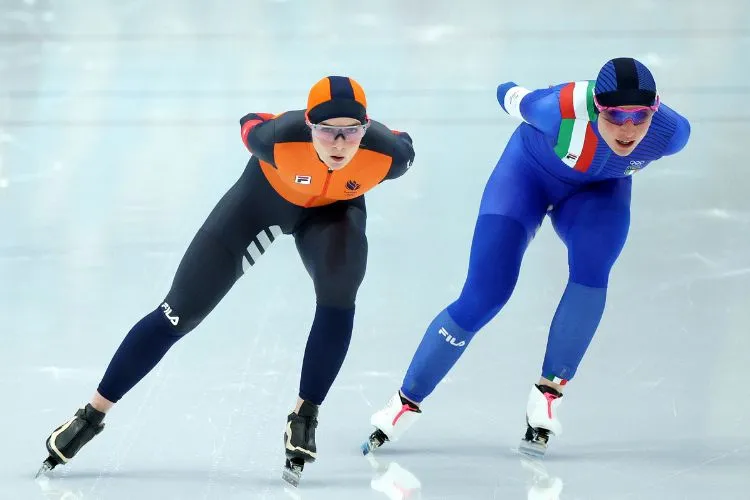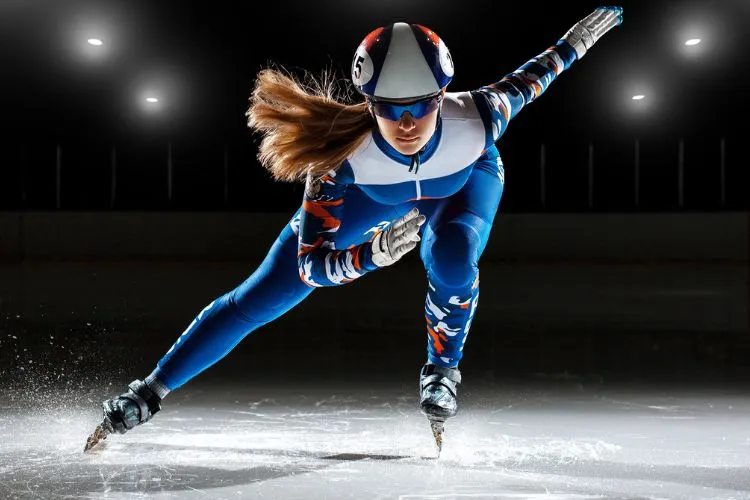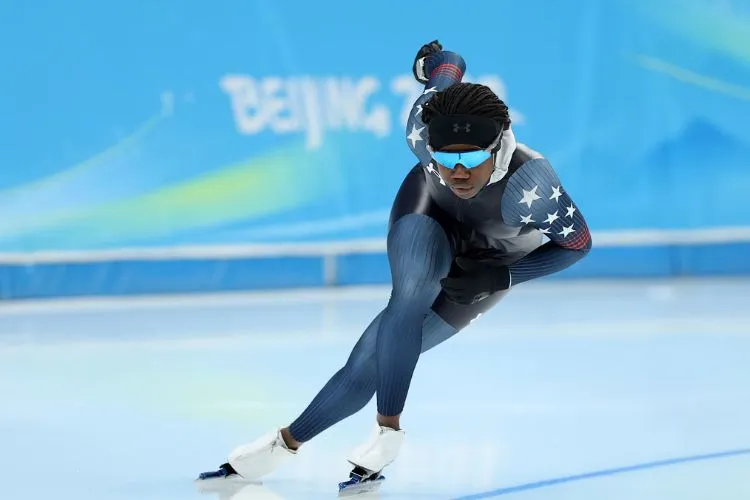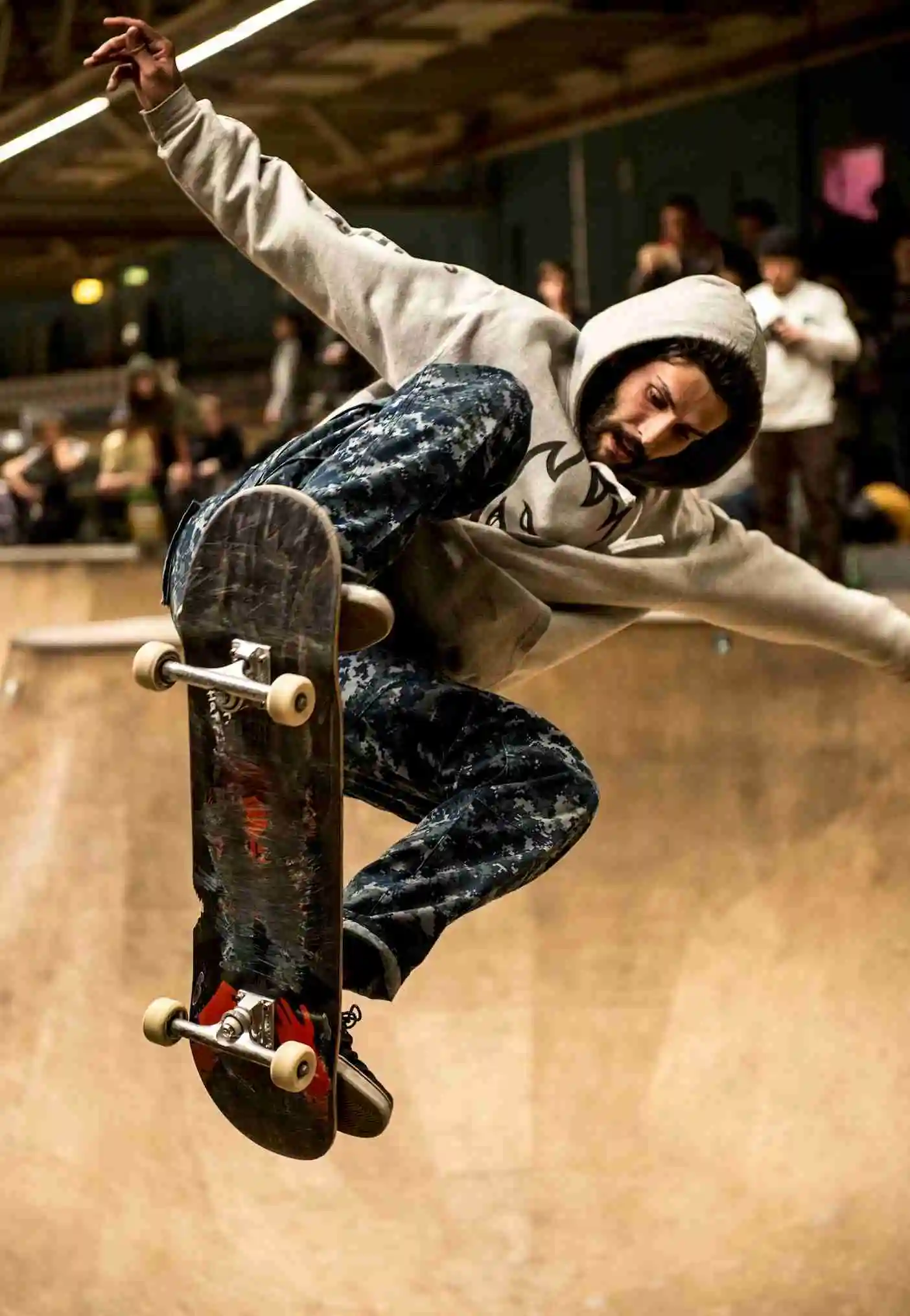Speed skating is a dynamic and thrilling sport that has captivated audiences for over a century. The spectacle of athletes gliding across the ice at high speeds, exerting both grace and power, is not just entertainment; it is a testament to the incredible physical and technical prowess required to excel in this demanding discipline.
This comprehensive examination of speed skating explores how fast can top speed skaters travel, the myriad factors influencing these speeds, and the famous figures who have left an indelible mark on the sport’s history.

Understanding Speed Skating
The sport of speed skating is categorized mainly into two disciplines: short-track and long-track. Each type of speed skating not only involves a unique set of skills but also showcases the athlete’s capacity to adapt to the physical demands and strategic intricacies of the race.
Short-Track Speed Skating
Originating as an impromptu competition among ice skaters, short-track speed skating has evolved into a fiercely competitive event. The rink, approximately a quarter of the size of an Olympic-sized track, demands from athletes high levels of agility and precision.
The races, usually with multiple skaters, are characterized by tight pack formations and swift overtaking maneuvers, making for an unpredictable and thrilling spectacle.
Long-Track Speed Skating
In contrast, long-track speed skating takes place on a 400-meter oval and features a focus on sustained speed and endurance. Skaters race in pairs, competing against the clock rather than directly against each other.
The longer stretches allow skaters to build considerable momentum, making technique, rhythm, and stamina central to success in these races.
How Fast Can Top Speed Skaters Travel?
The question on everyone’s lips when they watch these icy gladiators in action is: “Just how fast do they go?” Record speeds in the sport have showcased the sheer velocity these athletes can achieve.
Professional Speeds
Professional short-track speed skaters can reach speeds of up to 48 km/h (30 mph), their powerful strides propelling them around the rink’s tight curves.
In long-track speed skating, where athletes have more room to build speed, they routinely surpass 60 km/h (37 mph), with an exhilarating momentum that keeps audiences on the edge of their seats.
Speed Skating Records
Records are a benchmark of peak performance in the discipline, and speed skating is no different. World records in long-track have seen skaters approaching 93 km/h (58 mph) during sprints, momentarily reaching velocities comparable to some land mammals!
These record speeds are achieved through a blend of raw power and flawless technique, honed over countless hours of dedicated practice.
Factors Influencing Speed in Speed Skating
Several crucial elements contribute to the impressive speeds achieved by speed skaters, beyond their natural athletic ability.

The Role of Aerodynamics
Aerodynamics is central to success in speed skating. Skaters must maintain a low, streamlined position, reducing wind resistance as they command the ice.
From the hunched back to the extended arms, every aspect of their posture is calculated to minimize drag, allowing them to maintain higher speeds over longer distances.
Physical Conditioning and Training
The physical condition of an athlete determines their ability to sustain high speeds. Rigorous training regimes focus on building leg strength, explosive power, and cardiovascular fitness.
Additionally, skaters practice specific drills to enhance technical skills such as balance, cornering, and pacing – all of which are essential components of high-speed racing.
Skate Design and Blade Technology
Skate design has seen vast improvements over the decades, with blade technology advancing significantly. Modern speed skates are marvels of engineering, featuring lightweight materials and meticulously fashioned blades that permit greater control and power transfer.
Athletes often personalize their skates to fit their own racing style and body mechanics, further optimizing their performance.
You may also like: What is Jam Skating? A Beginner’s Guide to Dance, Gymnastics, & Skates
Comparing Speeds: Speed Skating vs Other Sports
Within the ice sports arena, speed skating reigns supreme in terms of raw speed. While figure skaters prioritize artistry and technical prowess, and ice hockey players emphasize agility and teamwork, neither approaches the singular focus on velocity that defines speed skating.
In a broader sporting context, speed skaters hold their own against athletes across various disciplines, demonstrating the exceptional capabilities of the human body.
Famous Speed Skaters and Their Achievements
A sport is often defined by its heroes, and speed skating boasts several iconic figures who have pushed the limits of speed and set records that inspire future generations of skaters.

Trailblazers of the Ice
Individuals like Bonnie Blair and Sven Kramer have become synonymous with speed skating excellence. Blair, an American speed skater, amassed five Olympic gold medals across three Winter Olympics, setting world records and becoming an icon for aspiring athletes.
Dutchman Sven Kramer, with his multiple world championships and Olympic successes, has redefined long-track speed skating, displaying unparalleled dominance over the long distances.
The Legacy of Speed
These athletes, among others, have not only stamped their names in the annals of the sport but have also set a high bar for speed and endurance.
Their dedication to training, attention to technological advancements, and competitive spirit continue to inspire up-and-coming skaters who dream of one day eclipsing their achievements.
Frequently Asked Questions (FAQs)
How do speed skaters train to achieve high speeds?
Speed skaters engage in a rigorous and multifaceted training schedule that includes on-ice practice, dry land exercises for strength and conditioning, technique refinement, and tactical planning. Their intense workouts are crafted to enhance their speed, agility, endurance, and race strategy.
What is the fastest speed ever recorded in speed skating?
The official fastest speed in long-track speed skating is 93 km/h (58 mph), achieved during a sprint in a race setting. These extraordinary speeds are the product of optimal conditions, cutting-edge equipment, and exceptional athletic talent.
How do changes in technology affect speeds in speed skating?
Technological advancements in speed skating, such as improvements in aerodynamic suits and innovations in skate blade design, have significantly impacted the sport. These developments allow skaters to reduce wind resistance, optimize power transfer with each stroke, and maintain higher speeds with greater efficiency, leading to frequent setting and breaking of speed records.
Conclusion
Speed skating is a breathtaking fusion of athleticism, science, and sheer force of will. The sport continues to evolve as athletes strive for greater speeds, pushing the envelope of human performance.
With advancements in training, equipment, and an ever-growing understanding of the biomechanics involved, the future of speed skating promises even faster, more thrilling competitions.
As audiences around the world watch these athletes defy the limits, the fascination with the sheer pace of speed skating is guaranteed to endure and grow.

Matthew James is a passionate skater who wanted to create a platform to share his love for skating with others. With a vision to create a vibrant community of skaters, he aims to provide a space where skaters of all levels can connect, learn, and grow together.
